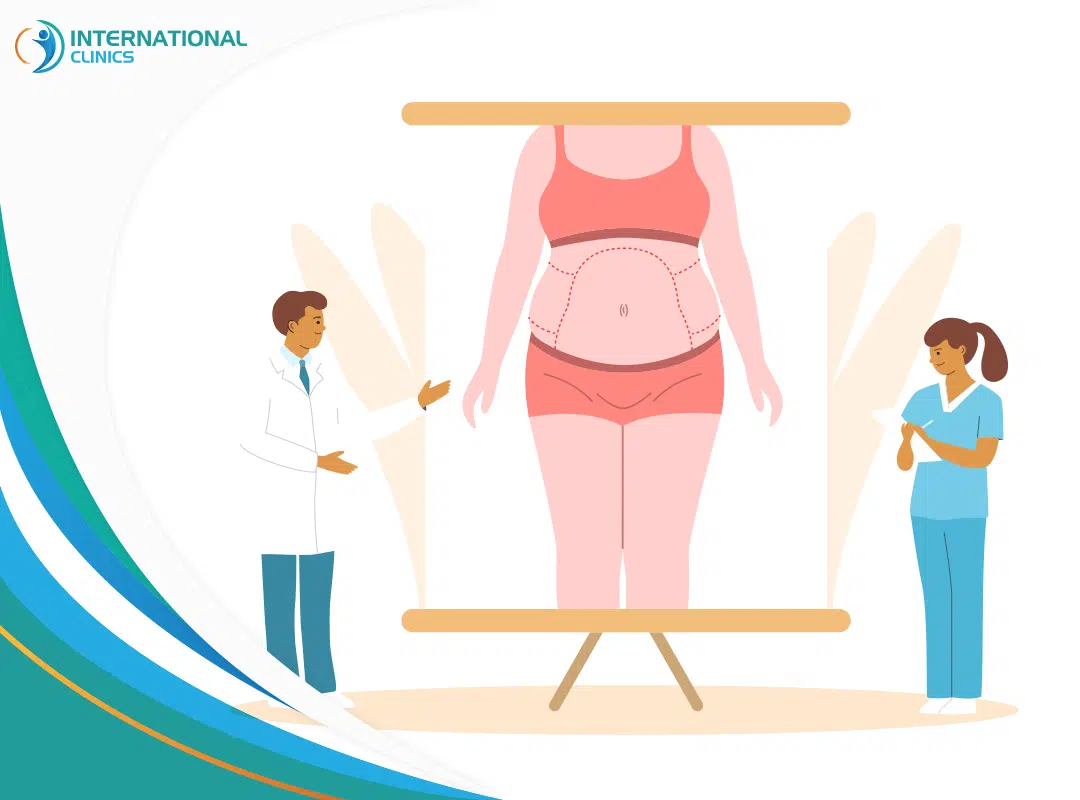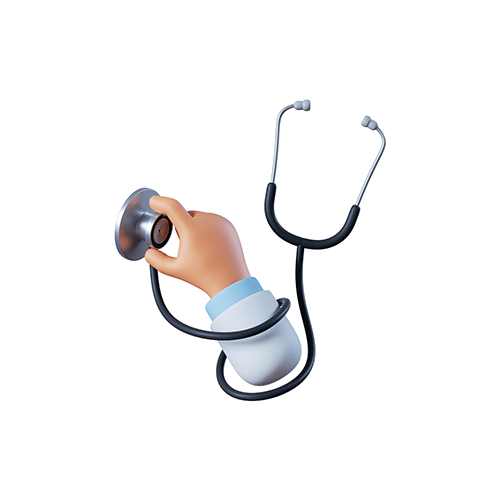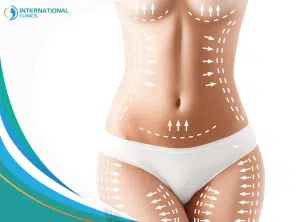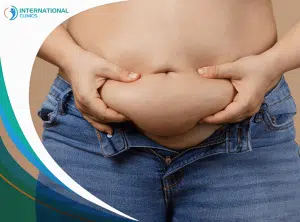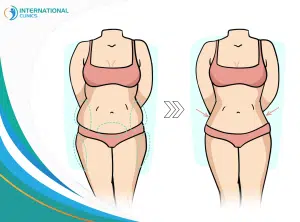If you’ve recently undergone liposuction or are considering it, knowing what to expect eight weeks after the procedure is an essential part of your journey.
Liposuction is a popular cosmetic surgery that aims to sculpt and contour your body by removing excess fat deposits. However, understanding the recovery process is just as important as the procedure itself.
Imagine waking up each day, excited about the changes happening in your body. At this stage, eight weeks post-liposuction, things start falling into place. You’ll notice that your appearance has transformed, and those problem areas that bothered you for so long are now a thing of the past.
Whether you’re contemplating liposuction or are already in the recovery phase, this blog will help you make informed decisions about your unique transformation.
Week-by-Week Guide to Liposuction Recovery
Recovering from liposuction surgery is a crucial part of the overall process. During the first week after liposuction, your body will be focused on healing the incision sites and reducing swelling.
This recovery timeline will provide you with a detailed breakdown of the typical recovery process after liposuction, emphasizing the importance of following post-operative instructions and addressing common variations in recovery time based on individual factors.
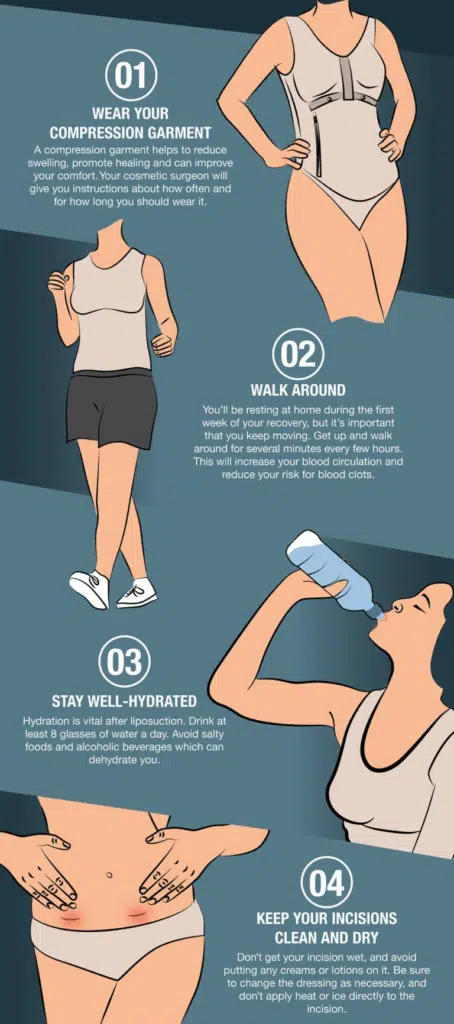
Week 1: The Road to Healing Begins
- Swelling and bruising: It’s normal to experience swelling and bruising after liposuction. This is part of your body’s natural response to the procedure. Applying cold compresses and wearing compression garments as recommended by your surgeon can help reduce these symptoms.
- Pain management: Your surgeon may prescribe pain medication or recommend over-the-counter pain relievers to manage any discomfort you may feel. Follow their instructions closely and reach out if you have any concerns.
- Activity level: Rest is crucial during the first week of recovery. Avoid activities that could strain your body or elevate your heart rate. Focus on gentle movements like short walks around the house to promote blood circulation without overexerting yourself.
- Diet: A healthy diet plays a vital role in the healing process. Make sure you’re consuming nutritious foods that support tissue repair and reduce inflammation. Consult with your surgeon or a registered dietitian for personalized dietary recommendations.
Week 2-3: Gradual Progression
As you enter weeks 2 and 3, you’ll likely start noticing improvements in how you feel and look after liposuction. While some swelling may persist, it should gradually decrease during this period.
- Reduced swelling: Swelling should continue to subside, although it may not completely disappear at this stage. Continue wearing compression garments as advised by your surgeon to help minimize swelling.
- Increased comfort: As the days pass, you should experience less pain and discomfort. However, everyone’s recovery is unique, so don’t be alarmed if you still have some lingering soreness.
- Resuming light activities: With your surgeon’s approval, you can gradually reintroduce light activities into your routine. This may include gentle stretching exercises or short walks. Avoid any high-impact or strenuous activities that could impede the healing process.
- Scar healing: Your incisions will begin to heal during this time. Follow your surgeon’s instructions for proper wound care to promote optimal healing and minimize scarring.
Week 4-6: Steady Progress
By weeks 4 to 6, you’ll likely see significant improvement in your liposuction results. Swelling should continue to diminish, and you may start feeling more like yourself again.
- Continued reduction in swelling: Swelling should be noticeably reduced by now, although it may still persist in certain areas. Be patient as it can take several months for all residual swelling to fully resolve.
- Increasing activity level: With your surgeon’s guidance, you can gradually increase your activity level during this period. Engage in low-impact exercises such as swimming or cycling if approved by your surgeon. Listen to your body and avoid pushing yourself too hard too soon.
- Diet and hydration: Maintain a balanced diet rich in nutrients that support tissue repair and overall health. Hydration is also crucial for optimal recovery.
- Follow-up visit: Around week 6, you’ll likely have a follow-up appointment with your surgeon to assess progress and address any concerns or questions you may have.
Week 7-8: Embracing the New You
At the eight-week mark, you can expect the final results of your liposuction procedure to start becoming more apparent.
By this stage, any lingering swelling should have significantly diminished or resolved completely. The treated areas will appear smoother and more contoured than immediately after surgery.
- Minimal swelling: Swelling should be minimal at this point, allowing you to appreciate the full extent of your liposuction results. Any remaining swelling will continue to improve over time.
- Resuming normal activities: With your surgeon’s approval, you can gradually resume normal activities and exercise routines. Remember to start slowly and listen to your body’s signals.
- Scar management: Continue following your surgeon’s instructions for scar care.
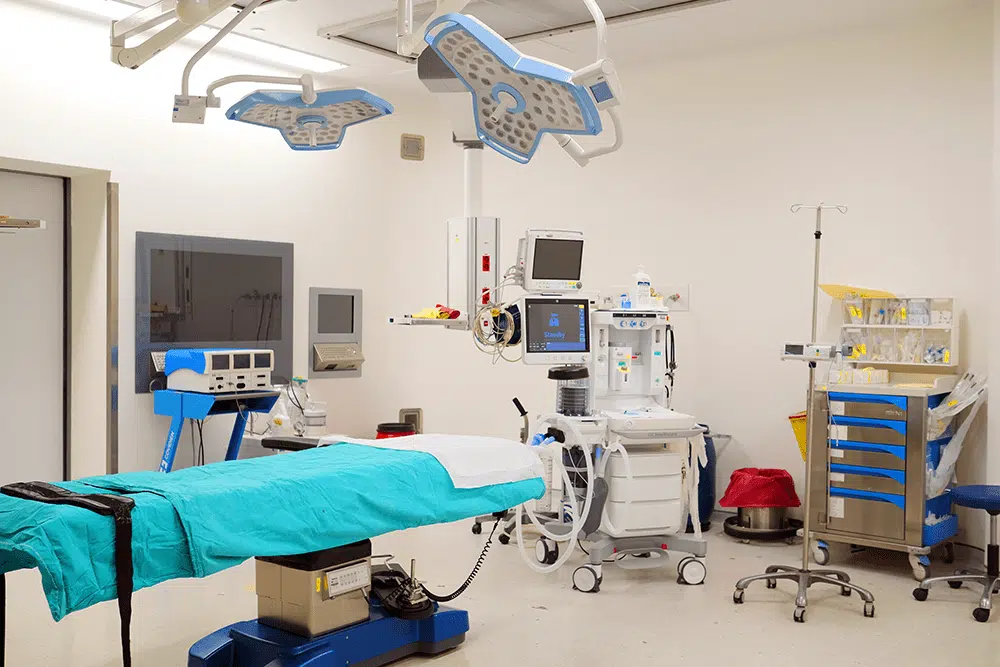
Get Your Free Consultation Now!
Improvement of Abdominal Bulge at 8 Weeks Post-Liposuction
If you’re wondering what to expect 8 weeks after liposuction, one of the most noticeable improvements is the reduction in abdominal bulge.
This is a common concern for many patients who undergo liposuction in Turkey on their abdomen. Let’s dive into how this abdominal bulge typically diminishes by week 8 and explore the factors that can influence the rate and extent of improvement.
How does the abdominal bulge diminish after liposuction?
After undergoing liposuction on your abdomen, immediate results may not be fully visible due to post-surgical swelling. During the initial stages of recovery, your body starts to heal and gradually eliminates excess fluid buildup and inflammation caused by the surgery.
As a result, you will notice a decrease in swelling around your abdomen area. This reduction in swelling plays a key role in improving the appearance of your abdomen.
Liposuction removes excess fat deposits from targeted areas such as love handles or lower belly pouches. The removal of these stubborn fat cells helps contour your abdomen and contributes to reducing the overall bulge.
Factors influencing the extent of the improvement
Several factors can influence how quickly and extensively your abdominal bulge improves after liposuction surgery. such as:
- Tummy Tuck: If you underwent a tummy tuck procedure alongside liposuction, it’s important to note that this surgical technique involves removing excess skin and tightening the underlying muscles. The combination of tummy tuck with liposuction enhances contouring effects but may require additional time for optimal results.
- Compression Garment: Wearing a compression garment as recommended by your surgeon is crucial for minimizing swelling and supporting the healing process. This specialized garment applies gentle pressure to the treated area, helping to reduce fluid retention and promote proper lymphatic drainage. Adhering to wearing your compression garment diligently can contribute to faster resolution of abdominal bulges.
- Incision Points: The placement and number of incisions made during liposuction surgery can affect the recovery process. Smaller incisions typically result in less scarring and may lead to quicker healing time, potentially accelerating the improvement of your abdominal bulge.
- Residual Swelling or Minor Irregularities: some patients may still experience residual swelling or minor irregularities even at 8 weeks post-lipo. This is normal and part of the healing process. Your body continues to adapt and reshape itself over time, so patience is key during this phase.

Managing pain and discomfort after liposuction
Tips for effectively managing pain during the initial stages of liposuction recovery
- Take prescribed pain medication: Your healthcare professional will likely prescribe pain medication to help manage your discomfort after liposuction. It’s important to take these medications as directed, following the recommended dosage and frequency. These medications can help alleviate pain and make your recovery more bearable.
- Utilize over-the-counter remedies: In addition to prescribed medications, you can also consider using over-the-counter remedies to further manage your pain. Nonsteroidal anti-inflammatory drugs (NSAIDs) such as ibuprofen or acetaminophen can be effective in reducing inflammation and relieving mild to moderate pain. However, always consult with your healthcare professional before taking any new medication.
- Apply cold compresses: Applying cold compresses to the affected areas can help reduce swelling and numbness, providing temporary relief from discomfort. Wrap an ice pack or a bag of frozen peas in a thin cloth and gently place it on the incision sites for 15-20 minutes at a time, several times a day.
- Use compression garments: Wearing compression garments as recommended by your surgeon can aid in managing both pain and swelling after liposuction. These garments apply gentle pressure on the treated areas, promoting blood circulation and minimizing fluid buildup, which may contribute to discomfort.
- Keep yourself hydrated: Staying hydrated is essential for overall healing and can potentially alleviate some post-operative discomfort. Drinking an adequate amount of water helps flush out toxins from your body, supports tissue repair, and reduces inflammation.
Discussion on prescribed medications, over-the-counter remedies, and alternative methods
- Prescribed medications: Your healthcare professional may prescribe various types of pain medication depending on the intensity of your discomfort after liposuction surgery. Commonly prescribed options include opioids like codeine or hydrocodone for severe pain and non-opioid analgesics such as tramadol for moderate pain.
- Over-the-counter remedies: NSAIDs like ibuprofen or acetaminophen can be effective in reducing inflammation and providing temporary relief from discomfort. However, it’s essential to consult with your healthcare professional before adding any new medication to your regimen, as they can advise on potential interactions or contraindications.
- Alternative methods: Some individuals may prefer alternative methods to complement traditional pain management techniques after liposuction. These may include:
- Acupuncture: This ancient practice involves inserting thin needles into specific points of the body to stimulate natural healing processes and potentially alleviate pain.
- Herbal remedies: Certain herbal supplements, such as arnica montana or bromelain, are believed to have anti-inflammatory properties that could help reduce post-operative swelling and discomfort. However, always consult with a qualified healthcare professional before trying any herbal remedies.
- Physical therapy: Engaging in gentle stretching exercises and physical therapy sessions under the guidance of a trained professional can aid in managing pain while promoting flexibility and mobility during the recovery process.
Advising when it is appropriate to contact a healthcare professional regarding excessive pain or complications
While some degree of discomfort is expected during the recovery period after liposuction, it is important to recognize when certain symptoms require immediate medical attention. If you experience any of the following issues, contact your healthcare professional promptly:
- Intense or worsening pain: If your pain becomes severe or continues to worsen despite taking prescribed medications and using recommended remedies, it is crucial to seek medical advice.
- Excessive swelling or redness: While mild swelling is normal after liposuction, excessive or persistent swelling accompanied by redness could indicate an infection or other complications. Contact your healthcare professional to rule out any potential issues.
- Unusual drainage or foul odor: If you notice an unusual fluid discharge from the incision sites, particularly if it is accompanied by a foul odor, it may indicate an infection. Seek immediate medical attention in such cases.
- Numbness or loss of sensation: Temporary numbness is common after liposuction due to nerve irritation; however, if you experience prolonged or worsening numbness, it is advisable to consult with your healthcare professional for further evaluation.
- Adverse reactions to medications: If you develop severe allergic reactions, such as difficulty breathing, hives, or swelling of the face and throat after taking prescribed medications, contact emergency services immediately.
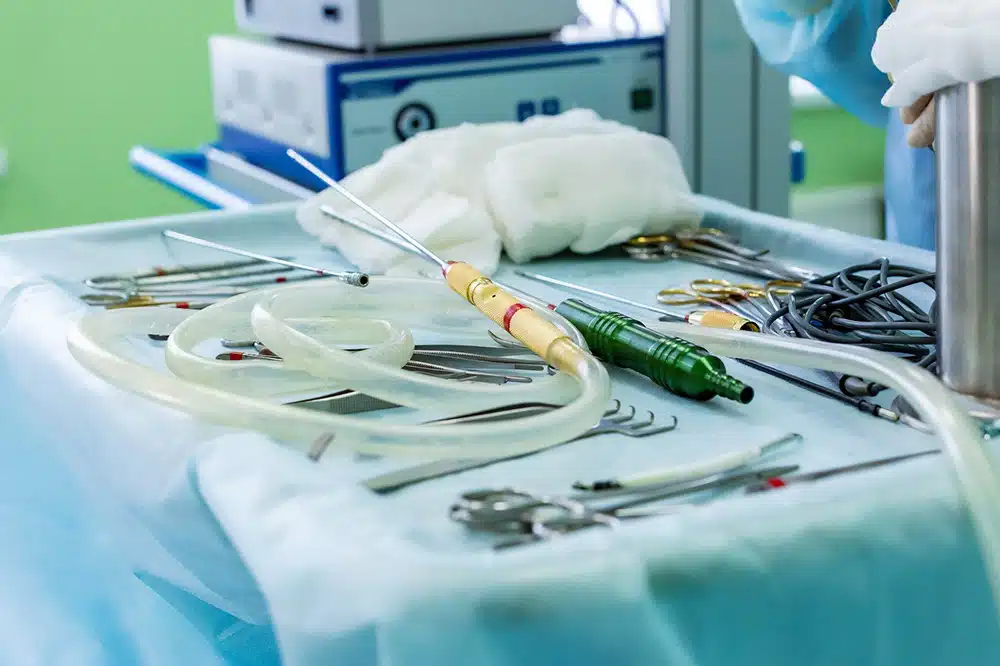
5 Tips for Boosting Liposuction Recovery
By making certain lifestyle choices, you can give your body the support it needs to recover efficiently. there are practical tips you can follow to help speed up the healing process. such as:
1- Maintain a Healthy Diet
A well-balanced diet plays a crucial role in your recovery. Focus on consuming nutritious foods that are rich in vitamins and minerals. Incorporate plenty of fruits, vegetables, lean proteins, and whole grains into your meals. These nutrients will provide your body with the necessary fuel to heal itself.
2- Stay Hydrated
Hydration is key during the recovery period. Drink an adequate amount of water throughout the day to keep your body hydrated and promote optimal healing. Avoid excessive consumption of sugary drinks or alcohol as they can hinder the recovery process.
3- Get Adequate Rest
Rest is essential for allowing your body to heal after liposuction surgery. Make sure you prioritize getting enough sleep each night and avoid strenuous activities that could strain your body during the initial weeks of recovery.
4- Lymphatic Massage
Lymphatic massage is another technique that can aid in post-liposuction recovery. This type of massage targets the lymphatic system, which helps eliminate toxins from the body and reduces swelling caused by the surgery. By stimulating lymphatic drainage, this massage technique can enhance healing and promote a smoother recovery.
5- Elevation
Elevating the treated area above the heart level can help reduce swelling. This can be achieved by propping up pillows or using cushions to keep the affected body part elevated.
Returning to Normal Activities After Liposuction
The recovery period can vary from person to person. Listen to your body and take things slowly. Rushing back into strenuous activities too soon can hinder the healing process and potentially lead to complications. Here are some key points you should keep in mind:
| Work | If you have a sedentary job that does not involve physical labor or excessive movement, you may be able to return after about a week or two. However, if your work requires heavy lifting or strenuous activity, it is advisable to wait until you have fully recovered before going back. |
| Exercise | While it is important not to overexert yourself during the initial stages of recovery, light exercises such as walking can be beneficial for blood circulation and preventing stiffness. Around 3-4 weeks post-surgery, you can gradually increase your activity level with low-impact exercises like swimming or cycling. |
| Social Engagements | Attending social events and gatherings can be an enjoyable part of life that shouldn’t be completely put on hold during recovery. However, try not to engage in activities that could strain your body or compromise your healing process. Opt for comfortable clothing that allows flexibility and avoids putting pressure on the treated areas. |
| Driving | The ability to drive largely depends on your comfort level and the location of the treated areas. It is generally recommended to wait until you are no longer taking prescription pain medication and can move comfortably without restrictions before getting behind the wheel. |
Speak with Certified-Board Surgeons!
What to Expect 8 Weeks After Liposuction
By the time you reach the 8-week mark after your liposuction procedure, you can expect to see some significant improvements in your body shape and contour.
One of the main benefits you may notice is a reduction in the overall size of treated areas. Stubborn pockets of fat that have been bothering you for years will likely be noticeably smaller or completely gone. This can lead to improved body proportions and increased self-confidence.
It’s not uncommon for certain areas to retain a bit of swelling even after eight weeks. This can make it appear as though there is still some excess fat in those regions. However, as your body heals further, this lingering swelling should gradually dissipate, revealing more refined results.
As the healing process continues, you may observe that your skin has started to tighten up around the treated areas. This tightening effect helps enhance the contours and smoothness of your newly sculpted physique.
Scar Healing and Care After Liposuction
Taking proper care of your scars during the recovery period is essential for optimal healing after liposuction. Here are some valuable tips and techniques to ensure your scars heal well and fade over time.
Advice on Proper Scar Care Techniques During the Recovery Period
- Keep it clean: Gently wash the incision area with mild soap and water, ensuring you remove any debris or bacteria that may hinder the healing process.
- Moisturize regularly: Apply a thin layer of scar cream or ointment to keep the skin hydrated, promoting faster healing and reducing scar visibility.
- Embrace silicone sheets: Consider using silicone sheets as they have been shown to improve scar appearance by providing compression and hydration to the area.
- Massage therapy: Gentle massage around the incision site can help break down scar tissue and promote blood circulation, aiding in scar fading.
Use of Silicone Sheets, Scar Creams, and Sun Protection for Scar Healing
Silicone sheets are an effective option for scar management post-liposuction. These thin sheets create a protective barrier over the incision area while delivering hydration that promotes collagen production. Collagen helps in rebuilding healthy skin tissue, improving overall scar appearance over time.
Scar creams containing ingredients like vitamin E, aloe vera, or onion extract can aid in reducing inflammation, minimizing redness, and softening scars. When applying these creams, gently massage them onto the affected areas using circular motions until fully absorbed.
Sun protection is crucial during scar healing as UV radiation can cause pigmentation changes in scars, making them more noticeable. Always apply sunscreen with a high SPF to shield your scars from harmful sun rays when going outside.
Addressing Common Concerns Related to Scar Visibility and Fading Over Time
Many individuals worry about the visibility of their scars after liposuction. However, it’s important to understand that while scars may initially appear red, raised, or prominent, they typically improve significantly over time.
Scar fading is a gradual process that can take several months to a year. Initially, scars may seem darker or more pronounced due to the body’s natural healing response. However, as the scar matures and collagen production increases, it will gradually fade and become less noticeable.
It’s worth noting that genetics, skin type, and the location of the incision can affect how scars heal. Some people naturally have a predisposition to developing more visible scars. If you have concerns about your scar healing progress or notice any unusual changes in your incisions, consult with your surgeon for further evaluation.
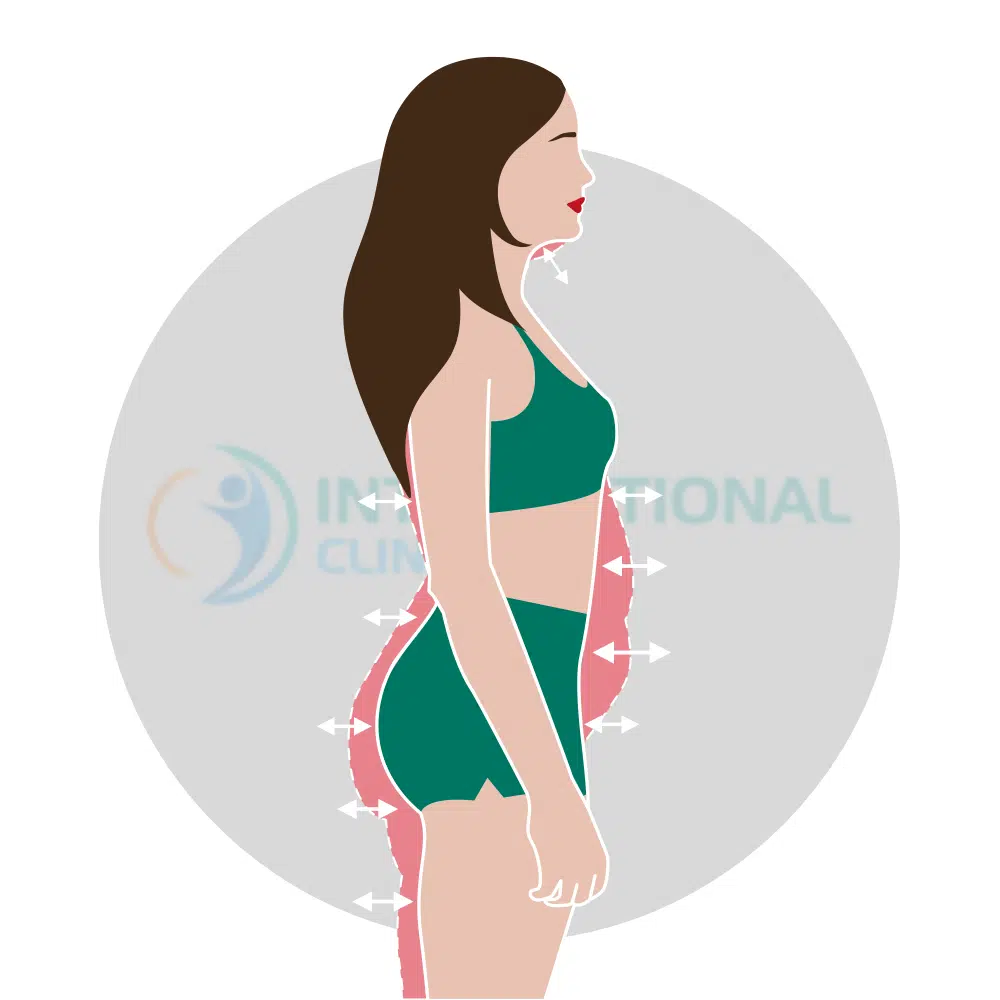
Maintaining Results & Long-Term Effects of Liposuction
Liposuction does not prevent future weight gain or alter your body’s natural tendency to store fat. Achieving a stable weight is another critical aspect. Fluctuations in weight can affect body contours and potentially compromise the desired outcome. With the nutritionist’s guidance, you can determine an appropriate target weight range that suits your body type and goals.
Maintaining the results of your liposuction procedure is crucial for long-term satisfaction. By adopting a holistic approach that includes regular exercise, a balanced diet, and stable weight management, you can optimize your chances of preserving the benefits of liposuction for years to come.
Factors Affecting Liposuction Results
Several factors come into play such as:
Skin Elasticity
In cases where the skin has good elasticity, it can better conform to the new contours of the body after fat removal surgery. However, if the skin lacks elasticity, it may not shrink as effectively, potentially leading to less desirable outcomes.
Individual’s healing abilities
Each person’s body responds differently to surgery and recovery processes. Some individuals heal quickly and experience minimal swelling or bruising, while others may require more time for their bodies to fully recover. It is important for patients to understand that their healing abilities can impact how soon they see noticeable improvements following liposuction.
Realistic Expectations Based on Individual Cases
When considering liposuction treatment, it is crucial for patients to have realistic expectations based on their specific case. While liposuction can remove unwanted fat deposits and improve body contours, it is not a weight loss solution or a substitute for a healthy lifestyle. Patients should understand that the primary goal of liposuction surgery is to enhance body proportions rather than achieve significant weight reduction.
By the eight-week mark, you can expect significant improvements in the treated areas. As you progress through your recovery journey, it’s always best to consult with your surgeon for personalized advice and guidance. They will be able to address any concerns or questions you may have and ensure that you are on track to achieve the best possible outcomes.
Remember to be patient, stay positive, and take care of yourself during this transformative process. With time, dedication, and proper self-care, you can enjoy the long-lasting benefits of liposuction and regain confidence in your appearance.
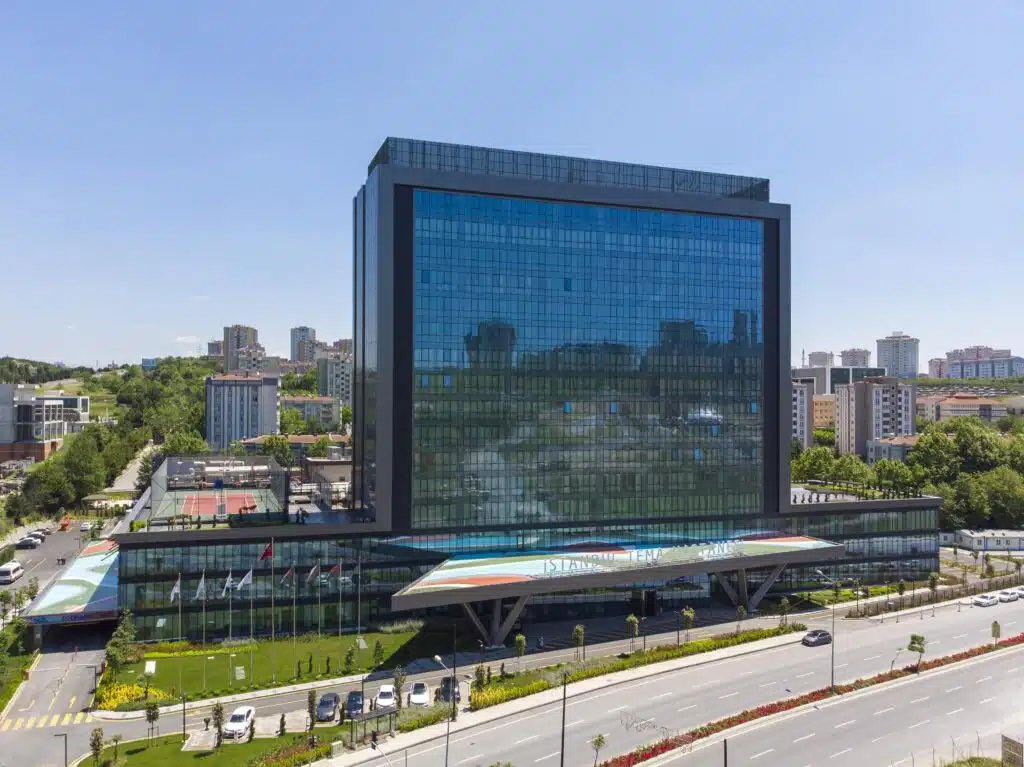
FAQ
Liposuction can effectively remove excess fat from targeted areas, but it is not a weight-loss procedure. It is essential to have realistic expectations and understand that liposuction is meant for body contouring rather than significant weight reduction.
While you may see some immediate improvement after liposuction, it can take several months for the final results to become fully apparent. Your body needs time to heal, and the swelling to subside before you can appreciate the complete outcome of the procedure.
Liposuction permanently removes fat cells from specific areas, which means those cells will not return. However, if you do not maintain a healthy lifestyle with regular exercise and a balanced diet, new fat cells can develop in other parts of your body over time.
As with any surgical procedure, there are risks involved with liposuction. These include infection, bleeding, scarring, uneven contours, and changes in skin sensation. It’s crucial to choose a qualified and experienced surgeon who can minimize these risks through proper technique and post-operative care.
You should consult with your surgeon regarding when it is safe to resume exercise after liposuction. Generally, light activities such as walking can be resumed shortly after surgery, while more strenuous exercises should be avoided for several weeks or until cleared by your surgeon.
Liposuction typically involves small incisions that result in minimal scarring. The scars are usually small and strategically placed to be discreet and easily concealed. Proper scar care, including keeping the incision sites clean and moisturized, can help minimize their appearance over time.
Liposuction is not suitable for everyone. It is important to have realistic expectations, be in good overall health, and have specific areas of concern that can be addressed through the procedure. A consultation with a qualified plastic surgeon will determine if you are a suitable candidate for liposuction.
Read More: Liposuction cost in Turkey
